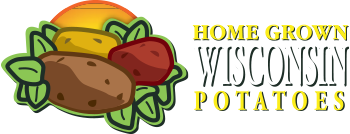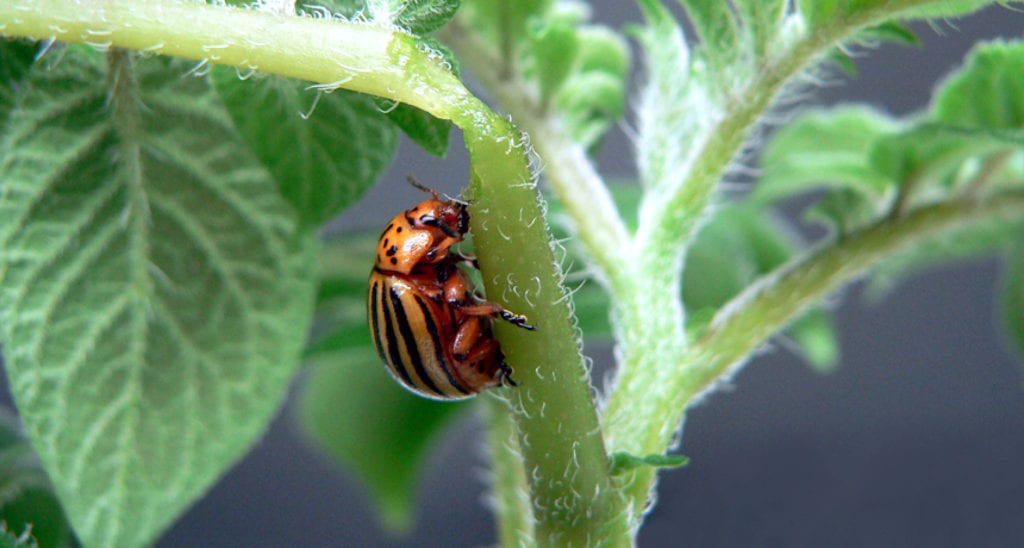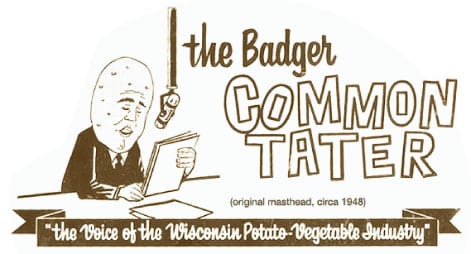 Follow-up on Insect Pest Thresholds in Potato
Follow-up on Insect Pest Thresholds in Potato
By Russell L. Groves & Amanda Gevens
University of Wisconsin, Dept. of Entomology & Plant Pathology
Insect sampling is sometimes referred to as pest scouting or monitoring in a field or specific region.
You might ask, “Why is sampling for pests and even potentially beneficial insects so important?” It is because it remains one of the most reliable measures for farmers and pest management practitioners to understand the onset, or even activity of insects in their crops and fields.
Producers must have this information before they can make cost-effective and environmentally sound pest management decisions.
Remember, the underlying concept of Integrated Pest Management (IPM) is that no action should be taken against a pest unless the pest is present and poses a threat to the crop. Thus, the main objectives of insect monitoring and sampling (pest and beneficial) are to:
Anticipate the arrival of species that are present in the crop
Determine their population density and the stages of development present in the crop
Determine how they are distributed in the field
Assist in formulating a response to the presence of damaging insect levels
There are, of course, many insect sampling techniques and types of sampling equipment that can be used to detect insects dispersing in the air (sticky cards, suction traps), on plants (sweep nets, visual counts), and even on and beneath soil (pit-fall traps).
Scouts in the potato field will often use sweep nets to sample insects on plants, because sweep sampling (i.e. a given number of sweeps per sampling location) is quicker and more cost effective for larger fields than inspection of individual plants.
Small-scale vegetable growers more commonly would sample a given number of individual plants per sampling location in the field and may even count the number of insects present on a set of plants.
In lieu of direct insect observation, some scouts will obtain an estimate of the degree of defoliation present on the crop as a surrogate for direct damage caused by a specific density of insects.
With enough samples collected over a management unit (e.g. field), this will provide a pest manager with a “relative” estimate of an insect’s abundance.
Solutions to pest problems must also be location, crop and even pest specific in most instances.
Given that all insects are considered cold-blooded (poikilothermic), the traditional techniques for managing agricultural pests and diseases have often depended on weather and climate information.
Even the choices of crop, variety and location are influenced by climate and climatic risk and affect the pest complex that is encountered.
During the growing season, many tactical pest management decisions are based on major synoptic weather events and now forecasts.
For example, good water management can reduce damage from insects, mites, or pathogens; and current and future weather conditions determine suitability for making pesticide applications to control pests.
Meteorological observations, forecasts and outlooks, coupled with plant and pest observations, are now used to anticipate or predict the development of key pests and this scheduling of control actions can help to prevent pest development and subsequent crop infestation.

In the particular case of Wisconsin, we have begun the process of creating the new Vegetable Disease and Insect Forecasting Network (http://vdifn.net/) (Fig. 1).
At this web page, we plan to make available disease and insect forecasting tools for producers to help characterize current and short-term forecasted risk for infection (disease) and infestation (insects).
Wisconsin farmers can then access the site and point to a specific location on the map to receive a current and forecast assessment of the predominant life-stage present in the crop, or risk of disease development.
With the specific example of the Colorado potato beetle (CPB), past research has already identified the temperature-dependent requirements of this insect.
To make projections on population development, we first estimate the number of developmental degree-days (DD) required for the insect to complete the different stages of development.
In the case of CPB, we know that the insect has a developmental minimum temperature of 50oF, and below this temperature, the insect will not continue to grow and molt to successive stages.

Once the first adult beetles have emerged from the ground, mated and begun to lay eggs, we begin the process of accumulating a running total of the number of degree-days above the developmental base temperature (Fig. 2).
For the insects to then develop from eggs to 1st instar larvae requires 185 DD50, from 1st to 2nd instar requires 240 DD50, 2nd to 3rd instar requires 300 DD50, and to complete the 4th larval instar requires 400 DD50.
Once the insect completes the fourth instar stage of development, it drops to the ground and pupates until it accumulates 675 DD50 in the soil after which time it emerges as a new, second generation adult CPB.
It is possible to repeat the process of predicting the development times of the second generation, although this approach has less predictability since some beetles will attempt to overwinter even after the completion of this first generation.
The later instar larvae of the first generation are considered the most damaging lifestages, which typically occurs in June and into early July.
However, adults that emerge in mid-July, and signify the beginning of the next generation, also feed extensively on the foliage. Due to feeding, leaflets initially develop holes of varying sizes starting around the margins, but can lead to complete defoliation if left untreated.
Several past reports have identified defoliation threshold levels to aid a producer in making decisions on when to spray to limit economic losses.
Although these thresholds vary somewhat among reports, an average defoliation level of 20% before tuber bulking, 10% during the first half of bulking, followed by 25% after bulking has been reported in the literature.
These thresholds were developed, however, when broad spectrum and fast-acting insecticides remained effective against all feeding stages of CPB and these included the organo-phosphates, carbamates and synthetic pyrethroids.
Unfortunately, due to insecticide resistance, these products no longer have the same effect on resistant populations of CPB, and we now must use newer insecticides that do not have similar activity across all stages of CPB development.
In fact, many of these novel compounds (e.g. abamectin, novaluron, spinosad, spinetoram) have their greatest impact when targeting early larval stages of CPB development, which occurs well before any of the established defoliation thresholds, are exceeded in the crop.
As a result, it becomes increasingly more important for pest managers to scout and monitor the development of populations in the crop to ensure that products are applied to the most susceptible stages of the insect.
Recall that earlier in this article we suggested that an underlying concept of Integrated Pest Management (IPM) was to take no action against a pest unless the pest is present in a damaging stage and poses a threat to the crop.
In our current system, we must adapt to these changes and effectively target several of these reduced-risk products ahead of damaging stages to ensure effective control and limit defoliation and economic losses.
Email groves@entomology.wisc.edu for questions or comments.




